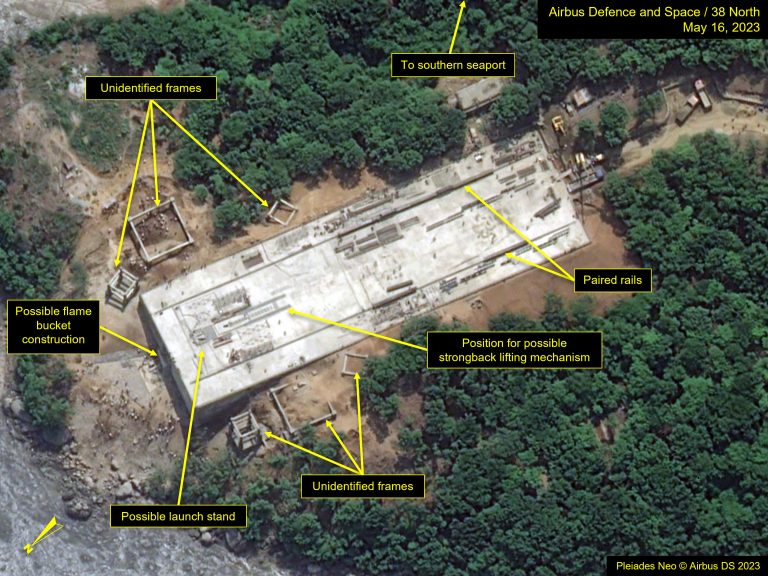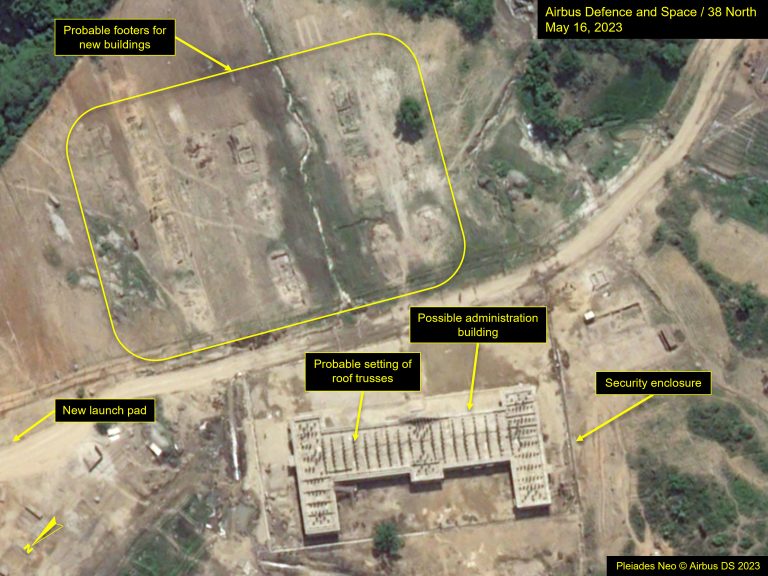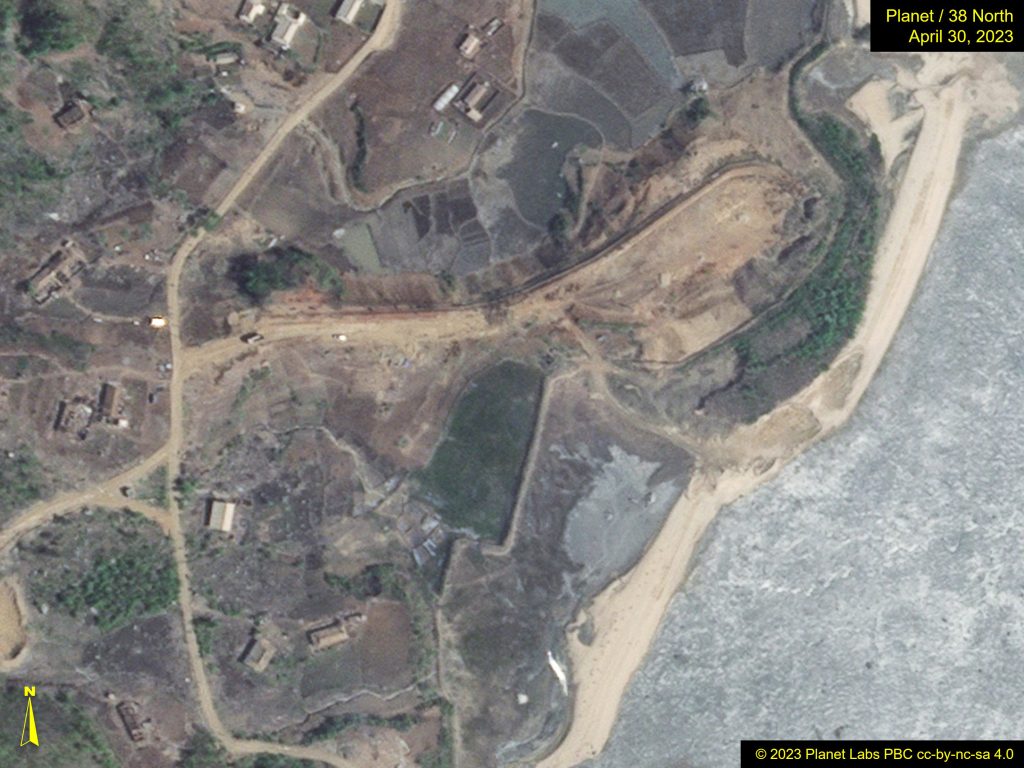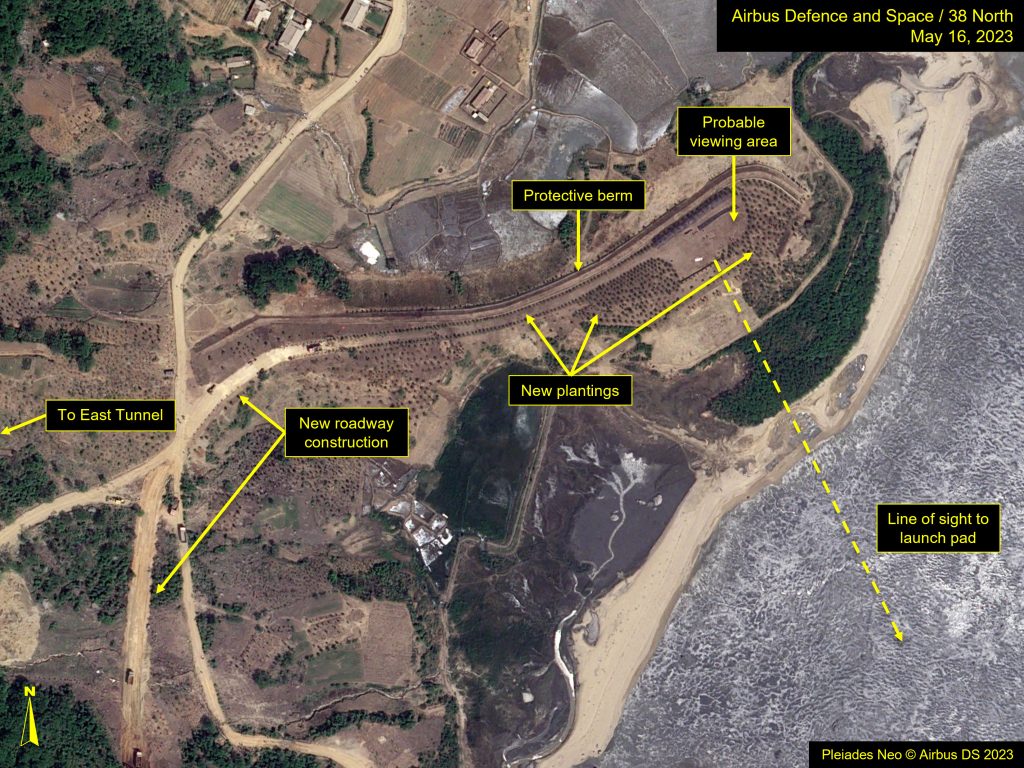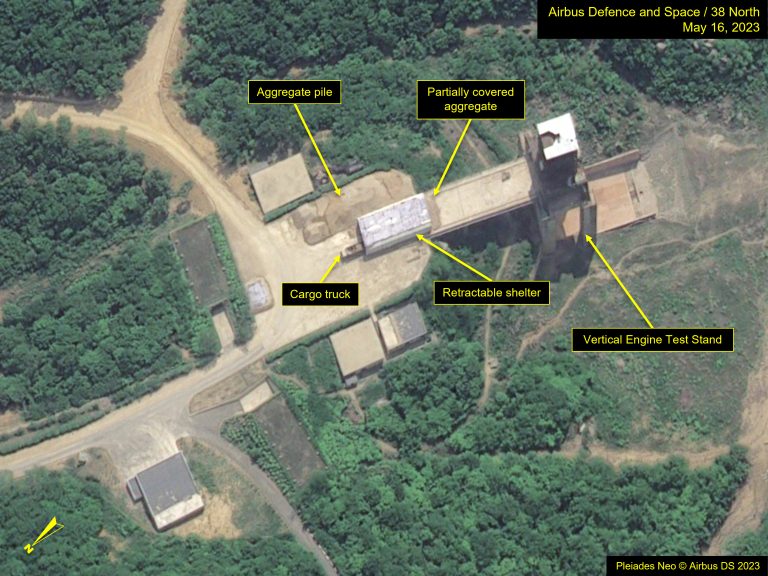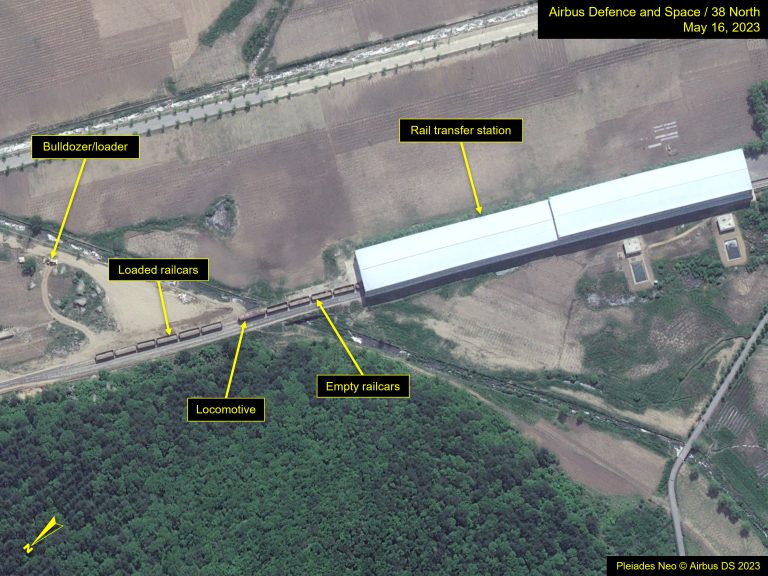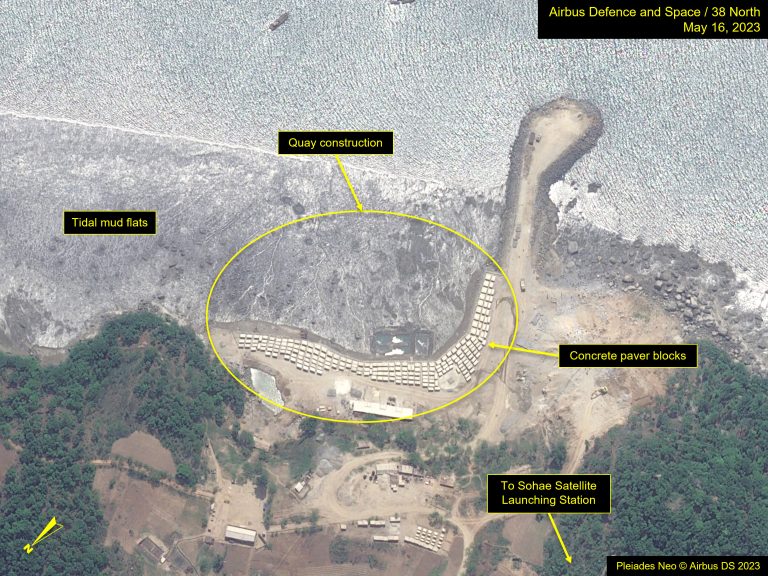Sohae Satellite Launching Station: Site Expansion and Modernization Efforts Make Significant Strides
The pace and extent of construction at North Korea’s Sohae Satellite Launching Station to substantially increase its capabilities underscore the high priority assigned to this project by Kim Jong Un (as outlined in March 2022). While the key components of the original launch station have been undergoing modernization, the addition of a Horizontal Engine Test Stand (HETS), the construction of a combined road tunnel and underground facility, a new probable receipt and assembly facility, and most recently, a new coastal rocket launch pad and probable observation site will allow for future testing of both liquid- and solid-fueled satellite launch vehicles (SLVs) with heavier payloads.
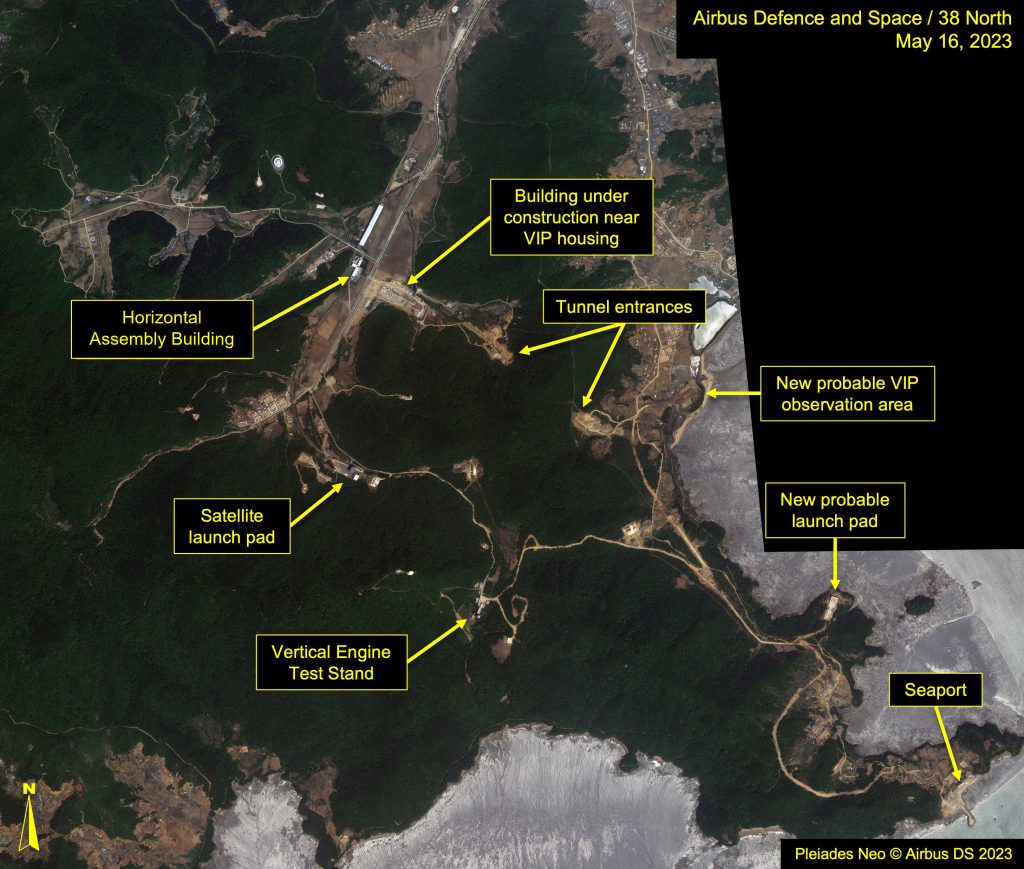
New Coastal Launch Pad
As reported earlier this week, recent commercial satellite imagery from May 16 revealed the presence of a new rocket launch pad, approximately 130 by 40 meters, located 1.2 kilometers northwest of the new seaport. Close examination of the north side of the pad shows what appears to be the early foundations for a probable flame bucket facing toward the sea, as noted by a few observers.
Atop the pad, probable rails run the length of the pad, 23 meters apart. On the south half of the pad, linear objects are being placed onto the probable rails, possibly trolley or track wheels needed to support a movable structure similar to that seen at the main satellite launch pad.
At the north end of the pad, there appears to be a possible launch stand or covered opening to the flame bucket and two parallel bars, suggesting where a strongback might still need to be installed to raise a horizontally placed rocket body into a vertical position.
At various locations around the pad, lattice pieces and long, linear materials are present; dozens of workers are observed as well, indicating the intensity of the work being conducted.
Next to the pad, there are four squares, raised probable tower bases. These are positioned to either side of the pad and might be for the placement of lightning arrestors. Two larger rectangular frameworks are located between the other tower stands, one to each side. Their purpose remains unknown.
Examination of three-meter resolution satellite images from Planet indicates the concrete pour for the pad began on May 11. Weather and low imagery resolution preclude further monitoring of its progress to completion. Concrete sets enough to be walked on after two days, and heavy equipment can be placed on it in approximately a week. Given the timeline recorded with imagery, this rushed construction may have compromised the stability and quality of the launch pad.
An associated large building under construction is located between the new coastal road—also under construction—and the old coastal road. Likely an administrative building, it is laid out in a modified C-configuration with the central rectangular section measuring approximately 18 meters by 74 meters, with two 12-by-12-meter extensions on either end. Since April 30, construction has proceeded rapidly, as imagery shows the addition of probable roof trusses. In addition, across the road to the east, probable footers for approximately 10 additional, smaller buildings are observed.
New Probable Rocket Launch VIP Observation Area
A probable new VIP observation area is being constructed at the coast, immediately adjacent to the East Tunnel entrance. The location could provide a position to observe rocket launches from the new seaside launch pad. Earlier preparation for the area included constructing an access road to an open field area situated above the beach. A newly constructed berm or levee parallels the roadway, presumably added to protect the area from storm surges during high tide periods. While work on the observation field nearby had begun by April 30, since then, trees and other shrubs have been planted along the route and the field as part of beautification or terrain stabilization efforts.
Figure 3a. Close up of probable new VIP observation area on imagery from April 30, 2023. Image © 2023 Planet Labs, PBC cc-by-nc-sa 4.0. For media licensing options, please contact [email protected].; Figure 3b. Close up of new probable VIP observation area on May 16, 2023. Image Pleiades NEO © Airbus DS 2023. For media options, please contact [email protected].
Main Satellite Launch Pad
Changes to the main satellite launch pad were discussed in our previous report from May 16. Subsequent measurements using sun and satellite viewing angles have determined that the tower crane arm or jib has been lowered to the same height as the top of the gantry tower. The purpose for doing so remains unclear.
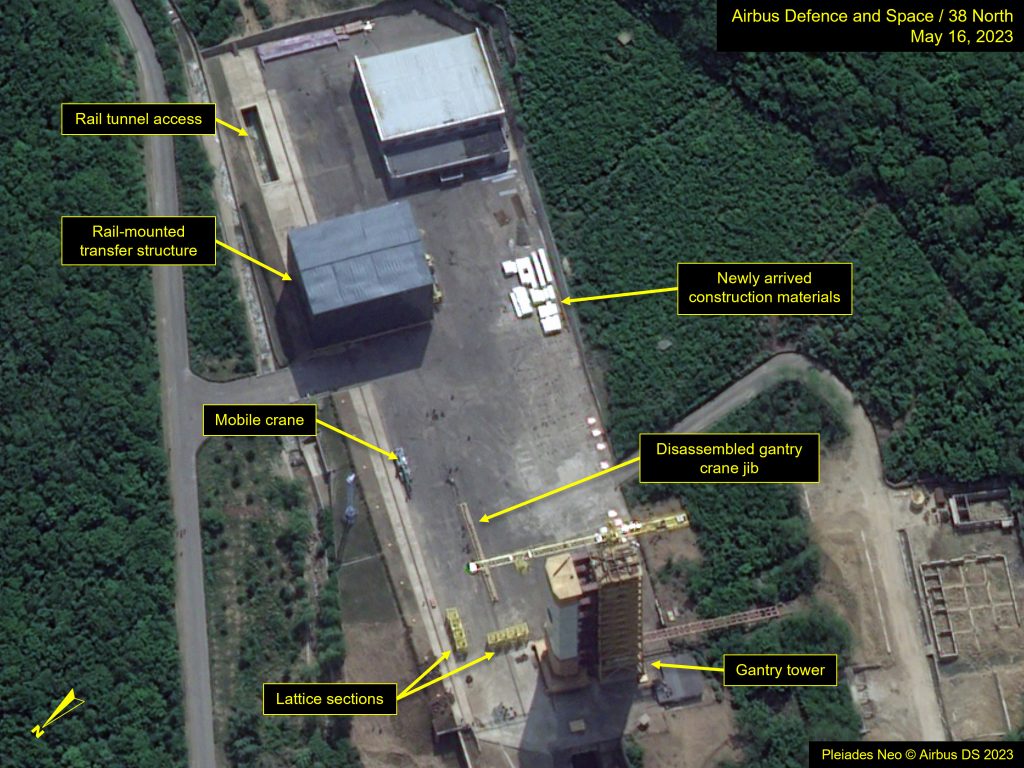
Roadway Construction
Construction on the new roadway, which will connect the southeast seaport and new launch pad to the rest of the Sohae complex, has moved forward since April 30. The pathway for the new road has been extended toward the East Tunnel entrance, although it appears to be heading further to the north as well. It will likely split at this point, with a spur continuing to the tunnel entrance, but reasons for the overall direction could become clearer as construction continues. Portions of the road appear to have received final grading (see Figure 3).
Tunnel Construction
The tunnel construction continues, although the exterior activity has shown little change since April 30. The east entrance shows the least amount of change, but the west entrance may have encountered some problems. Specifically, water drainage can be seen outside the entrance and continues along an excavated trench, which may soon serve as the roadbed to the entrance. In addition, a rectangular, 10-by-20-meter hole has been opened above the entrance, presumably to gain access to the tunnel equipment below. The exact nature of the work is unknown.
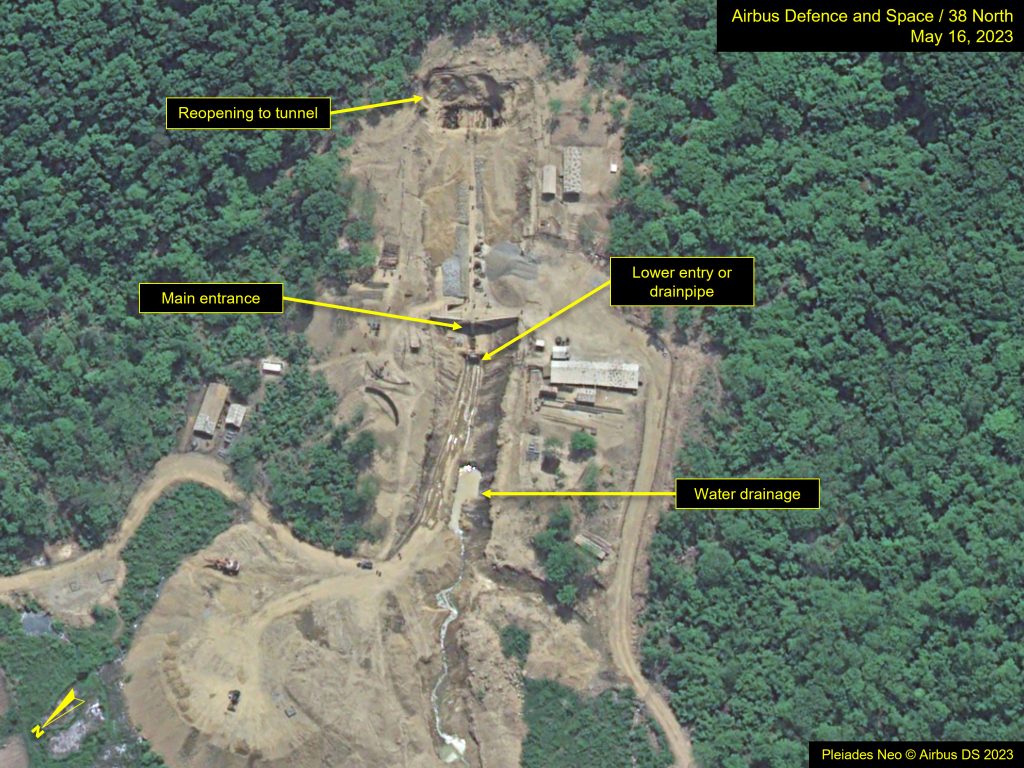
Building Construction
Work on the large new building facility continues across from the VIP housing area. The purpose of the structure is still uncertain. At the west end of the building, there are two large door openings. The north one opens into a long corridor that runs most of the length of the building and passes by a large, open-bay area. This facility may serve a similar purpose to the Horizontal Assembly Building located along the rail tracks, which services the covered rail station. The latter was designed specifically for the receipt of rocket components by rail. With the new sea-to-roadway entry point, the need for another assembly facility seems apparent.
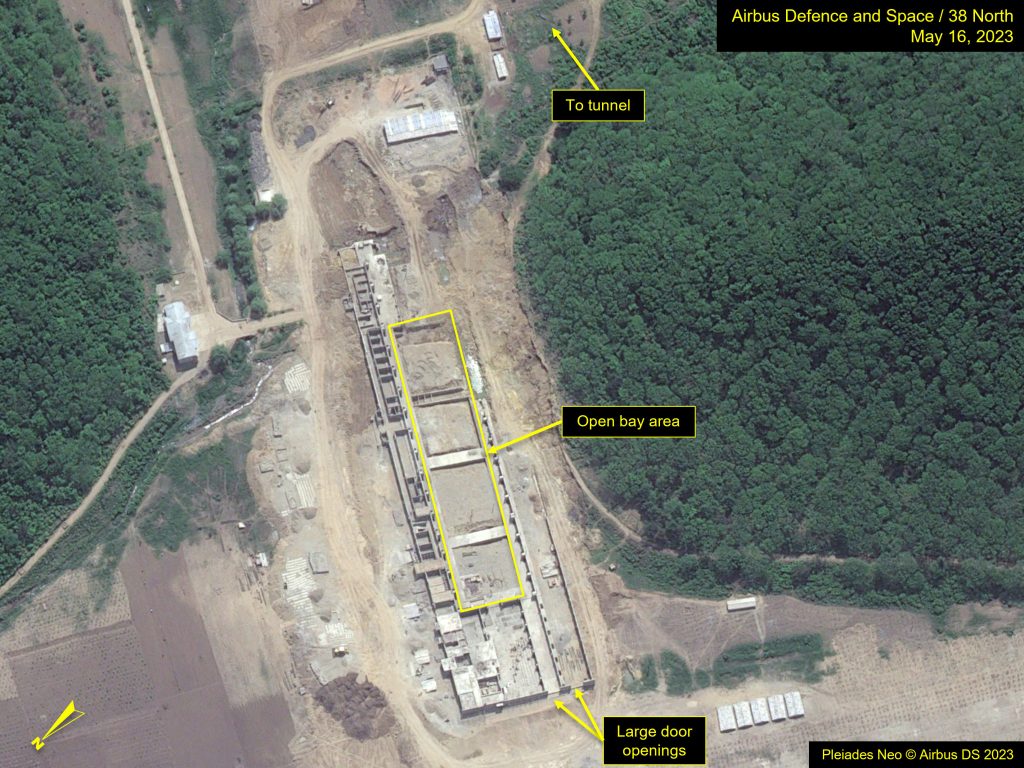
The Seaport
Since April 30, little has changed at the new seaport. Additional concrete blocks have been placed along the jetty and built-up coastline in preparation for constructing a quay.
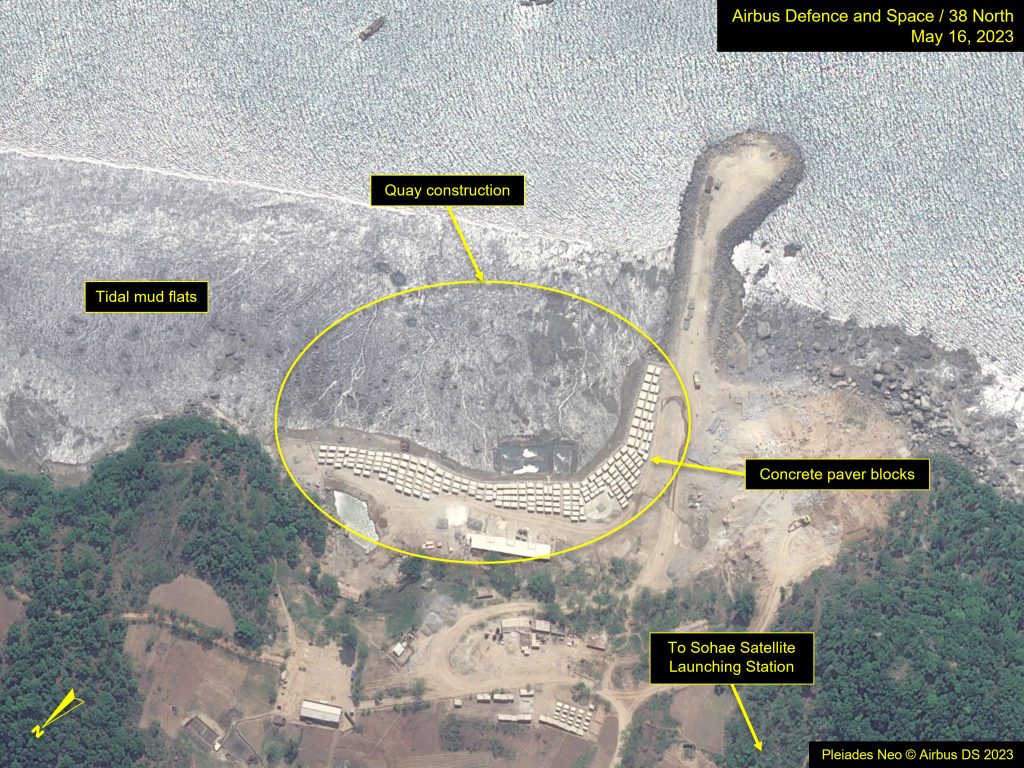
Other Activity
At the Vertical Engine Test Stand (VETS), the aggregate—which had been placed on the pad for temporary storage—is gradually being removed, and the pile on the west side of the mobile shelter has been gone since April 30. In addition, a cargo truck is backed in under the shelter, where some additional aggregate is now stored. That material may have been placed there earlier to keep dry.
Railcars continue to be seen at the north end of the covered rail transfer station near the original Horizontal Assembly Building. Such cars have been seen unloading dirt, likely used for the site’s ongoing construction activities.

